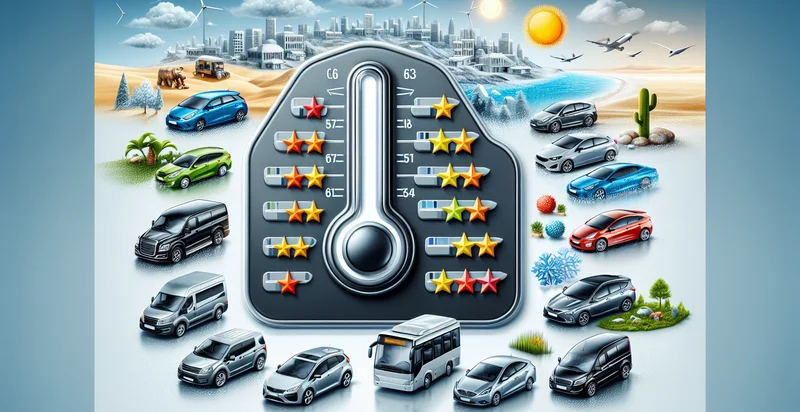Identify vehicle duty rating
using AI
Below is a free classifier to identify vehicle duty rating. Just upload your image, and our AI will predict the duty rating of various vehicles - in just seconds.

Contact us for API access
Or, use Nyckel to build highly-accurate custom classifiers in just minutes. No PhD required.
Get started
import nyckel
credentials = nyckel.Credentials("YOUR_CLIENT_ID", "YOUR_CLIENT_SECRET")
nyckel.invoke("vehicle-duty-rating", "your_image_url", credentials)
fetch('https://www.nyckel.com/v1/functions/vehicle-duty-rating/invoke', {
method: 'POST',
headers: {
'Authorization': 'Bearer ' + 'YOUR_BEARER_TOKEN',
'Content-Type': 'application/json',
},
body: JSON.stringify(
{"data": "your_image_url"}
)
})
.then(response => response.json())
.then(data => console.log(data));
curl -X POST \
-H "Content-Type: application/json" \
-H "Authorization: Bearer YOUR_BEARER_TOKEN" \
-d '{"data": "your_image_url"}' \
https://www.nyckel.com/v1/functions/vehicle-duty-rating/invoke
How this classifier works
To start, upload your image. Our AI tool will then predict the duty rating of various vehicles.
This pretrained image model uses a Nyckel-created dataset and has 5 labels, including Extra Heavy Duty, Heavy Duty, Light Duty, Medium Duty and Super Heavy Duty.
We'll also show a confidence score (the higher the number, the more confident the AI model is around the duty rating of various vehicles).
Whether you're just curious or building vehicle duty rating detection into your application, we hope our classifier proves helpful.
Related Classifiers
Need to identify vehicle duty rating at scale?
Get API or Zapier access to this classifier for free. It's perfect for:
- Fleet Management Optimization: The vehicle duty rating identifier can be used by fleet managers to classify vehicles based on their operational capabilities. This allows for improved allocation of resources and enhanced scheduling, ensuring that the right vehicle is deployed for specific tasks and reducing operational inefficiencies.
- Insurance Risk Assessment: Insurance companies can utilize the vehicle duty rating identifier to determine appropriate coverage and premiums based on a vehicle’s intended use. By accurately classifying vehicles, insurers can better assess risk and create personalized policies, potentially lowering costs for safer, lower-duty-rated vehicles.
- Regulatory Compliance: Government agencies and regulatory bodies can use the vehicle duty rating identifier to ensure compliance with transportation regulations. By classifying vehicles correctly, they can enforce legal limits on vehicle types in certain zones, enhancing safety and reducing the environmental impact.
- Vehicle Sales and Marketing: Automotive dealerships can incorporate the vehicle duty rating identifier into their marketing strategies to better target specific consumer segments. By understanding the duty rating, sales teams can recommend vehicles that match customer needs, improving customer satisfaction and boosting sales conversion rates.
- Maintenance Scheduling: Vehicle maintenance companies can use the identifier to tailor maintenance schedules based on the specific duty ratings of vehicles. This approach ensures that higher-duty vehicles receive more frequent inspections and maintenance, ultimately enhancing their lifespan and performance.
- Telematics and Performance Analysis: Companies can integrate the vehicle duty rating identifier into their telematics systems to analyze vehicle performance data. This allows for insights into how different duty ratings impact fuel efficiency, wear and tear, and other performance metrics, leading to informed decision-making for asset management.
- E-commerce and Delivery Solutions: Last-mile delivery companies can use the vehicle duty rating identifier to optimize their delivery fleets based on the type of goods being transported. By matching vehicle types to delivery duties, companies can improve delivery efficiency and reduce costs while ensuring compliance with vehicle restrictions in urban areas.


